In the ever-expanding solar power industry, few challenges are as persistent—and underestimated—as environmental impact on panel efficiency. Especially in arid and semi-arid regions where solar irradiance is highest, dust accumulation and heat-induced performance decline can compromise both energy yield and investment return. Companies like Steelbridge Export have long recognized that successful solar ventures in harsh environments require more than just premium technology—they demand intelligent operation and maintenance strategies.
Optimizing Solar Panel Performance: Dust Control and Thermal Loss Prevention
In this article, we will explore actionable insights into solar panel maintenance in hot and dusty climates, how solar panel efficiency loss due to dust affects production, and innovative cooling strategies for solar panels to reduce thermal derating in photovoltaic systems. With the rise of utility-scale solar in desert landscapes, understanding these dynamics is critical for long-term success.
Why Dust and Heat Are Enemies of Solar Efficiency
It’s no secret: dust impact on PV performance can be severe. Fine dust particles settling on photovoltaic surfaces can block sunlight from reaching the cells, reducing the generated output significantly. In hot and arid regions, this becomes a daily concern, turning desert solar farm maintenance into a crucial aspect of solar operations.
The losses due to dust can vary dramatically depending on location and cleaning frequency. Studies show that solar panel efficiency loss due to dust can reach up to 30% in just a few weeks without proper cleaning.
The Science Behind Thermal Derating
Another challenge to address is thermal derating in photovoltaic systems—a condition where panels lose output as their temperature rises. Every solar panel has a specific temperature coefficient—a measure of performance drop with each degree of temperature increase.
In hot climates, the temperature coefficient of solar panels becomes a defining metric. As panel temperatures climb beyond optimal levels (often 25°C), their efficiency decreases. This adds a layer of complexity to solar panel performance optimization, especially in desert regions where both high irradiance and extreme heat are common.
Combatting Soiling: Cleaning Solutions and Strategies
Sand and soiling effects on PV systems can never be ignored. Dust, sandstorms, and dry winds in desert regions like the Middle East accelerate accumulation, leading to rapid efficiency drops.
To mitigate this, cleaning utility-scale solar farms must become a routine operation. There are several emerging technologies and methods available:
- Automated robotic cleaners: Reducing labor costs and ensuring regular maintenance
- Dry cleaning techniques: Minimizing water usage, critical in desert regions
- Water-efficient washing systems: When dry cleaning isn’t enough, optimized water spraying systems offer effective dust removal
Routine and intelligent cleaning is a core principle of solar panel maintenance in hot and dusty climates, directly impacting plant reliability.
Cooling Strategies to Tackle Heat
Heat remains a persistent challenge, making cooling strategies for solar panels essential for modern farms. There are several proven and innovative methods used today:
- Passive air ventilation designs: Using airflow beneath panels to regulate temperature
- Water mist cooling systems: Spraying water to cool down surfaces during peak heat
- Thermal coatings: Advanced coatings that reduce heat absorption
These techniques can combat thermal derating in photovoltaic systems, keeping performance high even in harsh mid-day conditions.
The Importance of O&M Best Practices
Successful solar ventures in the Middle East and North Africa (MENA) region depend on solid solar O&M best practices in the Middle East. From rigorous scheduling to proactive diagnostics, strong operations and maintenance ensure that efficiency remains within acceptable thresholds.
Best practices include:
- Monthly soiling ratio assessments
- Real-time performance analytics
- Predictive maintenance using drone and AI technologies
These practices not only reduce solar panel efficiency loss due to dust, but also ensure proactive responses to unexpected environmental factors.
Regional Relevance: Why the Middle East Needs Specialized Solutions
The Middle East is rapidly emerging as a solar superpower. With vast desert lands and year-round sunlight, it’s a dream location for solar farms. However, success requires adapting to local realities.
Desert solar farm maintenance in the region demands:
- Localized EPC and O&M partnerships
- Strong awareness of sandstorm patterns
- Supply chain agility for equipment replacement
Understanding sand and soiling effects on PV systems helps stakeholders design better farms from the ground up. Modular layouts, elevated panel structures, and tilt optimization are being used to reduce dust retention and aid natural cleaning by wind or rain.
EPCF Model: Financing and Operational Efficiency
From a business standpoint, the EPCF model (Engineering, Procurement, Construction, and Financing) offers a clear advantage for building sustainable, high-efficiency solar systems in dust-prone environments.
Incorporating maintenance planning and dust-control designs into the early engineering phase helps minimize surprises post-commissioning. Financial frameworks under the epcf model allow developers to allocate budgets for long-term O&M, especially for solar panel maintenance in hot and dusty climates.
The Future of Clean, Efficient Solar Energy
With rising energy demands and climate goals becoming more urgent, utility-scale solar projects can’t afford inefficiencies. Through smart application of solar panel performance optimization and integrated planning with the epcf model, industry players can future-proof their operations.
Whether it’s solar panel efficiency loss due to dust, thermal derating in photovoltaic systems, or cleaning utility-scale solar farms, each factor must be addressed as part of a holistic solar strategy.
Steelbridge Export is proud to partner with solar developers and governments across the Middle East to ensure each solar farm performs at its best under real-world conditions.
Final Thoughts
Performance optimization is no longer optional—it’s the cornerstone of successful solar investment. With advanced tools, reliable O&M, and strong partnerships, tomorrow’s solar farms can thrive even in the harshest climates.
As we look toward a brighter, cleaner future, let’s design solar systems that work smart—not just hard.
Frequently Asked Questions (FAQs)
- What causes solar panel efficiency loss due to dust?
Dust accumulation blocks sunlight from reaching the photovoltaic (PV) cells, reducing energy output. In desert and semi-arid regions, efficiency loss can reach up to 30% within weeks without regular cleaning, making dust a critical factor in solar performance decline. - How does heat affect solar panel performance in desert climates?
High temperatures cause thermal derating, where output drops as panel temperature rises. Each panel has a temperature coefficient, and when temperatures exceed 25°C, efficiency decreases. In desert regions, this impact is amplified, making thermal management essential. - What are the best strategies for cleaning utility-scale solar farms?
Effective cleaning methods include robotic cleaners, dry-cleaning systems (to conserve water), and water-efficient spray systems. These technologies reduce labor costs and ensure consistent maintenance in dusty environments like the Middle East. - What cooling strategies can reduce thermal derating in PV systems?
Solutions include passive air ventilation, water mist cooling during peak heat, and thermal-reflective coatings. These methods help maintain optimal panel temperatures, especially in hot climates, enhancing system efficiency and lifespan. - Why is O&M critical for solar projects in hot and dusty climates?
Operations and Maintenance (O&M) ensures long-term performance by integrating real-time analytics, monthly soiling assessments, and predictive drone inspections. In regions like the Middle East, specialized O&M strategies are essential to mitigate dust and heat challenges.





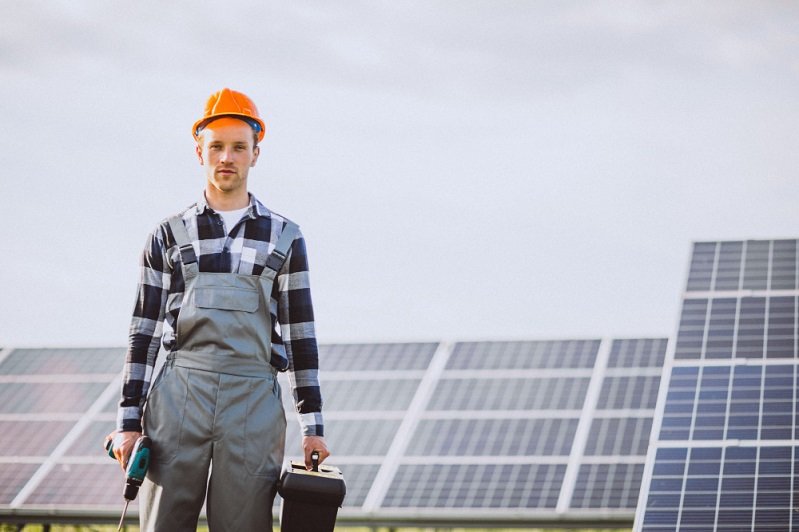
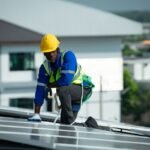
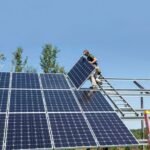
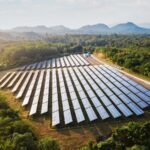
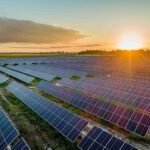

1 Comment
[…] related: Optimizing Solar Panel Performance: Dust Control and Thermal Loss Prevention […]